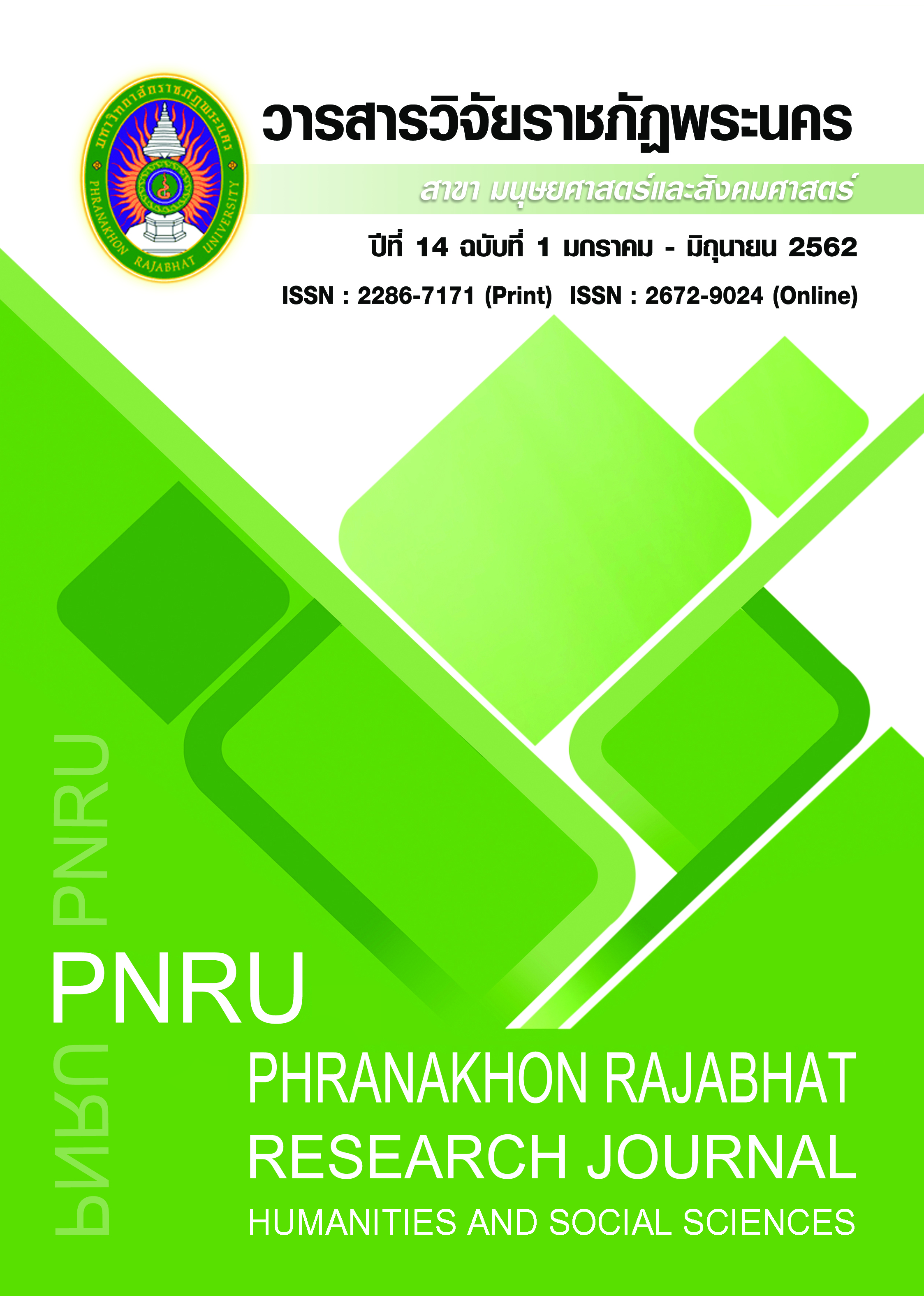KEY ELEMENTS IN DEVELOPING MARKETING POTENTIAL OF OTOP PRODUCTS IN THE AEC MARKET
Main Article Content
Abstract
The purpose of this project was to study the key elements in developing marketing potential of OTOP products in the AEC market. This was a qualitative research. The instruments used for this research were in-depth interview, observation and documentary study. The target group was OTOP entrepreneurs who bring their products to sell in the AEC market.
The result revealed that the key elements in developing marketing potential for entrepreneurs to bring products to sell in the AEC market were that the entrepreneurs must study consumers behavior from each of the AEC countries because each country has its own culture and different attitude affecting the selection of products to be sold in each market, and also the entrepreneurs must adjust the marketing mix (4 Ps} including the product, price, place, and promotion to fit the need of each country’s consumers behavior. As well as, taking the principle of 4M into consideration in the operation including man, money, materials, and management methods especially in capital management used in business and operation process that lead to the ability to market products in AEC countries. This is because selling products abroad, costs are higher than domestic exhibitions. Aside from that in some markets, entrepreneurs will experience language problems of which require human resource management that can help explains the details of the sale, the part that must be employed as an interpreter during the sale and in the search for dealers for after the sale is completed.
Article Details
Each publish articles were copyright by Phranakorn Rajabhat University
Any contents which appeared in each articles in the journal were authors personal opinion. It did not relate to Phranakorn Rajabhat University and other instructors in the university. Each authors would take responsibility on their articles. If there are any mistake, the authors will take responsibility themselves
References
Bowonkulpa, B., & Teindam, S. (2014). Marketing mix strategy and Thai wisdom products with 5 Star management in Nakhonpathom province. Conference 4th on Sustainable rural development. Khon Kaen province, 11 – 13 June, Khon Kaen University. (in Thai)
Champawong, P. (2004). Community potential for "One Tambon One Product" project in Muang District, Chanthaburi Province. Special Problems, Interdisciplinary State, Burapha University. (in Thai)
Department of International Economics. (2016). One Tambon One Product: OTOP. Retrieved September 14, 2016 form https://www.mfa.go.th (in Thai)
Jeankul, T. (2014). The problem and the adaptation of OTOP to the AEC. Executive Journal. 1, 177 – 191. (in Thai)
Jitprakong, P. (2014). "Consumer behavior" on trade challenges, investment in ASEAN. Bangkok: Asian Studies Institute Chulalongkorn University. Kampod, B. (2014). Interviewed on April 14. (in Thai)
Pakeechay, K., & Tipanate, A. (2013). An approach for OTOP product development on preparing to AEC in case of miniature model Tambon Ban-Len Woman Group. National Academic Conference Rajamangala University of Technology Suvarnabhumi 1st. Phra Nakhon Si Ayutthaya province, 22 June, Rajamangala University of Technology Suvarnabhumi, Phranakhon Si Ayutthaya Center, Phra Nakhon Si Ayutthaya. (in Thai)
Keawbonma, S. (2014). Interviewed on March 20, 2014. (in Thai)
Kaewserm, T. (2008). Problems and needs for developing potential of community and local product entrepreneurs (OTOP) in Phetchabun Province. Phetchabun: Phetchabun Rajabhat University. (in Thai)
Kongrit, S. (2002). Marketing management. Nakorn Phatom: Rajabhat Institute Nakorn Phatom. (in Thai)
Mongkondee, D. (2014). Interviewed on April 2, 2014. (in Thai)
Muangrak, S., & Sannanuch, S. (2003). Technical handbook for Increasing productivity in a strong community. Bangkok: Office of the Permanent Secretary for Industry Ministry of industry. (in Thai)
Neamsawas, N. (2014). Interviewed on February 15, 2014. (in Thai)
Saysupap, J. (2014). Interviewed on March 2, 2014. (in Thai)
Theerakul, N. Wiboonpong, A., & Sriboonchit, S. (2005). Self-reliant process of OVOP to OTOP and lessons for Thai OTOP. The 2005 Annual conference and symposium to increase agricultural productivity. Faculty of Agriculture, Chiang Mai University. Capital district, Chiang Mai province, 20 – 21 September, Research Center for Agricultural Productivity (SCG), Faculty of Agriculture Chiang Mai University (in Thai)


